Former Director of VTV Can Tho
On August 18, 2007, Ca Mau Provincial Radio and Television Station (CTV) held a meeting to celebrate 30 years of radio broadcasting (August 19, 1977 - August 19, 2007) and 20 years of television broadcasting (August 19, 1987 - August 19, 2007).
In the art program to welcome contestant Quan Thanh Thuy, the 7th Ca Mau Radio and Television Singing Contestant - 2007, sang the song "Returning to the Cape" (Musician Hoang Hop - poem by Le Chi). That poem by Le Chi still reminds us today:
“Oh! Ca Mau Cape/a hundred loves and thousands of affections/A grain of sand encroaches on the sea and adds more forest/all urging people to hurry their feet/quickly move their thoughts and aspirations/to the land and sea of Ca Mau, to see the land and sky more vast…”
This poem was written by poet Le Chi in October 1976 (printed in the poetry collection REMEMBER) - Up to this point in 2025, 49 years have passed but it still reminds everyone on their journey!
- Who Destroyed the Forest?
In 1989, I moved from Minh Hai Newspaper to Ca Mau Radio and Television Station (CTV) and made my first mark with the report “Who Destroys the Forest” which won the Silver Medal at the National Television Festival. During those years, life was difficult, provincial agencies flocked to the Nam Can mangrove forest to raise shrimp, hoping to find more income. Phan Trong Nghia and I wandered through the mangrove forest that had just been cut down to set up shrimp farms. Feeling heartbroken at the destruction of the “sky-high” mangrove trees, we kept pressing the camera, pressing the camera (M7)… and that was the end of the band. I said: Please find a way to contact the station to send more bands (VHS). We continued to go into the forest…
Somehow we went and filmed seven VHS tapes which is 840 minutes of tape.
Mr. Nghia said:
- Filming a documentary takes up so much bandwidth. It's like filming a feature film.
After that, we returned to Nam Can district, where we made an appointment with the People's Procuracy and the district police. After the meeting, Mr. Bay Nang, Deputy Chief of the District People's Procuracy, refused to be interviewed, saying: We work in the district, and the destruction and exploitation of forests for shrimp farming is the responsibility of provincial agencies. How dare we speak out!
We left, the next morning we went to the People's Procuracy of Nam Can district again, I told Uncle Bay Nang.
- Yesterday you didn't answer the interview, so now you and I will discuss so that the child knows the situation, the data, listen to me...
Before that, Mr. Nghia and I consulted and placed the camera on a remote table, recording sound with the microphone of the M7 camera.
Uncle Bay Nang said:
- You guys go down to contact the district People's Committee and then go to the forestry farm to ask for forest land, saying that you will "make a square" for the agency.
- Dozens of provincial agencies… Back in the room, checking the sound again, Mr. Nghia was happy: The sound is very clear, Phi Thuong!
After a few days of field trips, we returned to Taiwan.
Mr. Nghia and I sat together and watched the entire 840 minutes that the band had filmed. Before that, the Board of Directors decided to select this topic to participate in the National Television Festival. According to the regulations of the Organizing Committee, the short report festival should not exceed 8 minutes. After finishing editing (7 minutes and 12 seconds), Mr. Nghia and I decided to change the commentary for the ending, and let the contact person for announcer Kieu Diem read it again:
… “ Dong Thap Muoi? No! This is a small corner of the forest in Tan An commune!
A panoramic scene of vast water and the mangrove roots still return…!
The band was loaded onto a 15-seat bus with a group of people sent to attend the national television festival - straight to Can Tho Television Station - at 3:30 am.
- Western Echoes:
In September 2005, I attended the conference summarizing the Vietnamese broadcasting industry at the Hanoi Opera House. At around 3 p.m., I received a phone call from Mr. Tu Linh (Nguyen Hong Linh), Director of Can Tho City Radio and Television Station:
- Where are you?
- I'm at a conference.
- Come to West Lake now, is there anything you need to discuss?
When I arrived at West Lake, I saw Mr. Tu Hong Linh, Mr. Tu Ha (Nguyen Thanh Ha), Director of Kien Giang Radio and Television Station, and Mr. Hai Tran Nha, Director of Tien Giang Radio and Television Station. Mr. Tu Hong Linh began: Currently, each station broadcasts within its own local area. Now we have to join together to have a wider broadcasting range, which will generate advertising. But there must be a program with a common name for the stations.
This matter was left to the youngest Ca Mau (me) to think of a proposal. September in Hanoi is the time of transition from summer to autumn. Suddenly there were rains, we sat in a floating hut eating West Lake shrimp cakes and drinking Hanoi draft beer.
Not long after that, the program "Echoes of the West" officially aired from Can Tho City Radio and Television Station, connecting: Tien Giang, Kien Giang and Ca Mau.
Musician Le Nghiep wrote the lyrics and arranged “Echoes of the West”… Let’s come together in love/ Let’s come together in the arms of friends/ Always carry the alluvial soil in our hearts/ Let’s join hands to build our country’s literature and art…
Rotating every three months, each station builds its own art program. So the art program, once a quarter, is connected to 4 stations: Can Tho, Ca Mau, Kien Giang and Tien Giang. The program quickly won the affection of many audiences and listeners in the Mekong Delta. It became a strong brand, attracting advertising resources from the stations.
A live TV show with ticket sales and scholarship fund establishment “Echoes of the West” is a historic milestone for local radio and television stations.
- I go to research "ask"
The autumn weather in Hanoi, the cold car reminds me of: Hearing the sound of autumn coming, rustling leaves falling, my heart suddenly feels melancholy, filled with nostalgia. (Autumn Sound by Luu Trong Lu). Mr. Nam Ky (Le Huynh Ky), Director of the Department of Planning and Investment of Ca Mau province and I met Mr. Ba Sang (Nguyen Minh Sang), Deputy Head of the Department of Localities, Ministry of Planning and Investment, in charge of the Mekong Delta.
Through the story with Mr. Ba Sang, I said:
- Dear Mr. Ba! Ca Mau Radio and Television Station (CTV), in addition to its political mission, CTV is also a place of entertainment, a restaurant with plenty of fresh food. To do so, the Station must know how to create good TV programs that attract viewers... Therefore, an effective broadcasting transmission system to the public is needed.
Ca Mau province is the southernmost province of the country. Far from major economic and cultural centers, there is no university..., the station is very short of technical equipment... It is very much in need of support from the Central Government. So that the delicious, strange, attractive dishes from the station's television programs can reach 1.2 million people in Ca Mau province!
That is the enthusiasm of television workers, the will of provincial leaders, and the aspiration of the people of Ca Mau tip.
….The green Cape of Ca Mau/ the long, sharp cape of Viet/ Writing diligently on the ocean waves… (poem by Le Chi)
The Year of the Rooster 2005 is considered a lucky year with hopes for stable development, a transformation of Vietnam into the 21st century.
For Ca Mau Radio and Television Station (CTV), it is remembered as a spring full of joy because it was the first time it received a mobile television vehicle (color vehicle) invested by the Central Government, and it was also the first time CTV broadcast live the event "Celebrating the 30th anniversary of the liberation of the South and national reunification (April 30, 1975 - April 30, 2005) of Ca Mau province.
I remember once working with the delegation of the National Assembly's Committee on Culture and Education, Chairman of the People's Committee of Ca Mau province Bui Cong Buu in his speech made a recommendation:
- Vietnam Radio Frequency Department considers granting Ca Mau Radio and Television Station (CTV) channel CTV2!
Through that, CTV2 will open a specialized TV channel on science and education, popularizing cultural and scientific knowledge for people in Ca Mau province. Because Ca Mau does not have a university yet.
After that, Mr. Trinh Minh Thanh, Vice Chairman of the Provincial People's Committee and I went to Hanoi to present the document and directly met with the Director of the Frequency Department, Nguyen Thuy Tram, to request a license to establish the CTV2 television channel.
So Ca Mau Radio and Television Station has two channels CTV1 and CTV2. Ca Mau Radio turns a new page in history, or in professional terms, the music cuts through a new program that has just begun!
This is a period of remarkable development, raising the level of content and realizing technical facilities, expanding coverage to remote areas such as U Minh, Dat Mui, etc. Connecting via cable TV network to Ho Chi Minh City, increasing broadcasting time from 6 hours/day to 12 hours/day. Revenue from advertising sources increased, income of staff and employees increased and the phrase: paying income tax began to be familiar! That was also the period when CTV cooperated with television program production companies, advertising media companies, and expanded cooperation with other stations.
I remember the 30th anniversary of radio broadcasting and the 20th anniversary of television broadcasting. Before the meeting, the Party Committee and the Board of Directors of the Station decided to invite leaders, departments and branches in the province, five delegates from each district: District Party Committee, District People's Committee, Propaganda Department, Department of Culture and Information and the district station for training. Outside the province, all radio and television stations in the Mekong Delta and cooperative companies were invited.
It must be said that on that day, the flower shelves were packed tightly in the aisles, on the last floor of the hall: flowers and souvenirs were countless. There was a surprising and touching gift. Over 200 orchid petals were pre-arranged, packed in boxes, transported by TR72 plane from Ho Chi Minh City to Ca Mau, that box of flowers was carefully held by Ms. Trung Le Ngan Ha in her arms. Then the Organizing Committee sent someone to pin a purple orchid petal on the chest of each delegate, as a reminder of the cooperative relationship to develop together. At the welcoming party, after the polite greetings. Later, Ms. Trung Le Ngan Ha, Director of Tinh Hoa Viet Advertising and Communications Company, confided: The clarity and transparency in the way your station works helps us always trust and feel secure in cooperating. I am very impressed with the creative ideas to build new television programs, attracting audiences and listeners, bringing benefits to all parties. CTV not only keeps up with the trends of the times, but also preserves the cultural identity of Ca Mau locality.
From the idea of the poem: From Tra Co Poplar Forest to Nam Can Mangrove Forest. We signed the agreement between Quang Ninh and Ca Mau.
The content of the link clearly states: The two stations create favorable conditions to support reporters to work in each other's areas. Introduce and promote the image of the people of the two provinces of Quang Ninh - Ca Mau, from Khai Long to Ha Long. Live broadcast, relay live television events when the province requests. Extend the wave circuit from Mong Cai to Ca Mau Cape - The place where the S-shaped strip of land ends. The miracle has come: The only place in Vietnam where the sun rises in the East and sets in the West Sea. This is the intersection of rivers, mangrove forests and the sea. That is the longevity of the Vietnamese people through thousands of years of history.
- Fast steps
2008 was the peak year for many candidates getting zero points in the history exam. The percentage of below average scores was very high. Teachers lacked creativity, making it difficult for students to understand and remember. Students considered history a secondary subject, not important.
CTV combined with Nhat Advertising Media Company to create a historical TV program called: Speedy Footsteps.
Simulation of the march of King Quang Trung - Nguyen Hue in the battle to defeat the Qing army in 1789. Category "Collective movement game" - Format: Each team has 4 people, 1 commander, 2 people carrying hammocks, 1 person resting in turns. Each round of competition has 4 teams, starting at the same time, continuously passing 4 challenging rounds, choosing 2 teams to reach the finish line first to enter the quarter-finals and finals.
The four challenge rounds include:
- Country roads (crossing the monkey bridge over the canal - meaning leaving the village to join the Tay Son army.
- A pair of ten thousand mile sandals - two people form a team moving on sandals - meaning only with discipline can one move quickly.
- Find the code - get in the boat, row to the point to get the code - the meaning of unity to find the direction.
- Lightning fast steps - Two people carry one person lying on a hammock to decode the code, one person holding the command flag, finding instructions for the team to go to the chief examiner to decode the code. If the code is deciphered correctly, the whole team will be able to go up to the stage of glory to hold the flag, announcing the victory.
A history lesson through an outdoor environment that is fun, engaging, thrilling,… and bursting with joy of victory.
From the results of “Speedy Steps”, we (CTV and QC Nhut Company) continue to build a humanitarian television program: “Desire to Live”. The goal is to connect the community, help the unfortunate to revive. Destined to live through real-life experiences, with flexible solutions, build a system of volunteer clubs and groups, and form a local charity movement.
Journalist Nguyen Duc Tien, General Director of Nhat Advertising Media Company, confided: Because we have passed the threshold of life, fame and position are not the things we care about. We should hide ourselves in the simplicity of life and do whatever we can for humanity. I am moved to remember the first days of searching and giving the characters faith in the desire to live. How many cruel lives have risen up and continued to be human!
- I answer questions from the Provincial People's Council. (People's Council)
One morning in November 2007, Mr. Trinh Minh Thanh, Vice Chairman of the People's Committee of Ca Mau province, called me:
- Phi Thuong! The Standing Committee agreed on the voters' questions related to the Radio and Television Station, and assigned the Station Director to directly answer them.
It is customary for the Provincial People's Council meetings to be broadcast live by CTV. At the 11th session, the last session of 2007, the Provincial People's Council passed many important resolutions, including a resolution on socio-economic development tasks.
The meeting chairman asked the secretariat to approve the content of the voters' questions to the Radio and Television Station.
- Why do stations show many foreign films but very few Vietnamese films?
- Why are there commercials in the middle of the movie?
- The broadcast time for reformed opera and traditional singing is too short.
Dear People's Council delegates and voters!
Our grandparents often say "Being a daughter-in-law to a hundred families" but for Ca Mau Radio and Television Station, we have to be a daughter-in-law to 1.2 million families (Ca Mau population). We think and identify the television audience as the target audience. Always consider the audience as the central audience. In a flat world, we know how to segment and group audiences such as teenagers, manual workers and the elderly. These groups correspond to television programs such as: "Little Flowers" "film screening" and folk music - reformed theater. In conditions that allow, we only broadcast 12 hours/day, the program structure during the week: Saturday reformed theater, Sunday World here and there, Monday Vietnamese feature films, Tuesday to Friday foreign feature films, interspersed with documentaries, arranged to be broadcast in the remaining programs at different times of the day.
Dear delegates and voters! According to the regulation "The rate of Vietnamese feature films broadcast on television channels of Central and local Radio and Television Stations must ensure at least 20% of the total broadcast time". In reality, no station has been able to do this, including Vietnam Television (VTV). The cost of TV feature films is quite high. The competition fee is about 80 - 120 million/45-minute episode. Let's do the math. A 20-episode TV feature film x 120 million = 2 billion 400 million. Meanwhile, buying or exchanging advertising between stations and partners such as producers, film distribution companies, and advertising companies only accounts for 50% of the value of Vietnamese feature films. That's why there is a story: Advertising in the middle of the film. Because each advertising spot inserted in the middle of the film costs many times more than at the beginning and end of the film. At that time, TV audiences had a saying: Vietnamese films are like old men climbing mountains!
Similar to the production of television dramas. Folk music and reformed theater in theaters lack stage lights. Reformed theater troupes go to remote areas to find audiences. The traditional national art form “Lack of land to live”. Without nurturing fertile land, how can we reap the golden harvest!
After finishing my presentation, I sat down at the table, anxiously waiting for the People's Council delegates' opinions.
The Chairman of the Session, Chairman of the Provincial People's Council Le Hong My, asked:
- Does anyone have any comments on the Director's question and answer session?
A minute of silence passed.
Chairman Le Hong My said:
- So the Director of the Station's response to the voters' questions will be approved.
In the following days, public opinion discussed the Director of the Television Station answering questions before the Provincial People's Council. It was gratifying that the audience somewhat understood the responsibility and enthusiasm of those working in the visual journalism profession. Journalist Nguyen Van Tuan, Director of Hau Giang Radio and Television Station, said in a telephone call:
- I heard you answer questions before the People's Council, so I'm very happy. And Major General Tran Trieu Duong, Director of the Fire Police Department of Ho Chi Minh City, said.
- I was very pleased to hear you answer questions before the People's Council of Ca Mau province. Then the audience will understand and share the difficulties and limitations of the station... Keep it up, bro!
I feel happy and even more concerned: how to always have new and attractive TV programs. Diversify the approach to political and entertainment programs for each audience and group of audiences. This is the goal and motivation for those working in television in a flat world!
- CTV and the love of Dat Mui
After the success of the program in collaboration with the Department of Education and Training: Our School Singing (radio), in collaboration with the Department of Culture, Sports and Tourism, launched the contest: Searching for Cai Luong talents. After two successful contests, an agreement was signed with Ho Chi Minh City Television (HTV). CTV is responsible for the preliminary round with the name: Cai Luong Singers of the Bong Tram Prize . HTV final round: Golden Bell of Traditional Opera.
That idea opens up a useful playground, maintains and discovers the talents of reformed opera, a traditional art form of the nation, between the two stations CTV - HTV.
Implementing the policy of the Provincial Party Committee, in August 2009, Ca Mau Radio and Television Station signed a contract with Dat Mui Commune. The purpose of the contract between the two units is: CTV coordinates with Dat Mui Commune to develop Dat Mui into a new rural commune. Connecting the rural traffic system, creating conditions for students to go to school fully, supporting farmers to eliminate hunger and reduce poverty. CTV has linked companies and enterprises to build three rural traffic bridges, providing 20 savings books worth 1 million VND each for 20 poor households raising clams in Dat Mui Commune. An Giang Radio and Television Station supports the construction of charity houses for policy households with 40 million VND from ATV shelter funds. Providing hundreds of thousands of notebooks for poor students who have overcome difficulties. Organizing visits to poor people and policy families to celebrate the Spring Festival and meaningful holidays and anniversaries.
- Singing from the Gas - Electricity - Fertilizer project
Ca Mau Gas - Power - Fertilizer Complex was started in the early 2000s.
Opening the country's transformation period. Promoting economic development, international integration, joining the WTO. This is a key project including projects on Gas - Electricity and Fertilizer. In order to effectively exploit natural gas resources from the PM3 - CAA mine offshore the Vietnam - Malaysia continental shelf; contributing to the economic development of the Mekong Delta region, increasing electricity sources, increasing GDP for Ca Mau province. Ensuring national energy security, reducing dependence on imported fertilizers, stabilizing prices, creating jobs and developing local socio-economy.
During construction, the project mobilized thousands of domestic and international workers, engineers and experts.
It is the dry season now. The U Minh forest is blooming with cajuput flowers again. The cajuput flowers give off a strong fragrance, attracting bees to collect nectar. A typical product of the U Minh Ha forest.
Welcoming the Year of the Rooster 2005, it was also the time for CTV to host: Echoes of the Western Region . I reported and asked for the opinion of the Chairman of the Provincial People's Committee, Bui Cong Buu, to bring the program to serve the workers at the Gas - Electricity - Fertilizer construction site. Mr. Sau Buu agreed and advised:
- Bringing the program "Am vang mien Tay" to serve the people in the U Minh resistance base area, at the same time conveying the sentiments of the Party Committee, government and people of Ca Mau to over three thousand workers at the Gas - Electricity - Fertilizer project who cannot return home for Tet. Although it is difficult to bring a mobile TV vehicle to the construction site by ferry, river, with many risks... we must try to ensure safety. This is a great asset, newly invested by the Central Government for the province.
The stage was set up in the middle of a relatively flat, newly leveled vacant lot. The program's organizers bought more than three thousand plastic chairs and nearly 100 belt chairs for delegates, workers, and spectators to sit and watch. All of this was thanks to the help of the K1 Cai Tau prison force.
That afternoon, there was a tropical depression, and light rain burned out some of the stage lights. But the joy was unexpected: With 15 minutes left on air, the wind suddenly calmed down and the rain stopped! At 8:00 p.m., the program "Am Echo Mien Tay" with the theme: Singing from the construction site: Gas - Electricity - Fertilizer began with many performances. After the MC's introduction, there was a long applause, echoing in the quiet space of the U Minh Ha forest. There were whistles and boos when introducing the performance of singer Siu Black, a powerful voice, known as the nightingale of the Central Highlands.
…The Central Highlands sky is deep blue/ In the morning I go to the fields/ I see the shadow of the Kơ nia tree/ I ask the Kơ nia tree/ Where does your wind blow/ Towards the rising sun/ To drink the water of the Northern source,… (Song Kơ nia Tree Shadow by Phan Huynh Dieu).
U Minh - Melaleuca Forest, Central Highlands - Xa Nu Forest, Northwest - Pac Po Forest with the shade of Kônia trees. It is wonderful when the nightingale sings loudly in the middle of U Minh with the immense scent of Melaleuca trees.
- Millennial man
One evening in September 2009, I watched on VTV1 that Hanoi was actively renovating historical relics: Thang Long Imperial Citadel, Temple of Literature. This was the time when Hanoi was radiantly beautiful in autumn! The streets were full of fallen yellow leaves, the scent of milk flowers wafted through the corners, the calm waters of Hoan Kiem Lake, West Lake, etc. I suddenly thought: The 100th anniversary of Thang Long - Hanoi (1010 - 2010) was coming soon.
A few days later, I called to invite composer Ha Nam Quang (Ha My Dung) to come to Ca Mau and Dat Mui.
November is the dry season in Dat Mui, the weather is cool, little rain, the sea is gentle. The mangrove ecosystem is clearly visible, the alluvial land and migratory seabirds. Shrimp and fish are the best time, especially Ca Mau crab.
Ca Mau is an alluvial land deposited by the Mekong River through the estuaries and meets the ocean currents of the East Sea and the Gulf of Thailand. According to scientists, about 300 years ago, the Cape was a swampy, saltwater area, with not many residents living there. The land deposition process continues, each year the Cape encroaches on the sea from 80 - 100mm, so there is a folk saying: here the land expands, the forest walks and the sea grows . As a rule: Mangroves first, mangroves later, so the Cape of Ca Mau continues to lengthen along the sea.
A stilt house made of mangrove trees, a young couple are debating how to use local products such as shrimp, fish, crab, or mangrove trees (chang tree duoc)... to make products to participate in the 1000th anniversary of Thang Long - Hanoi. After a period of debating, they agreed to skip the products from dishes and think about the "head" - That is the spiritual product.
That pair of friends were Duoc and his classmate Hoa. During summer vacation, they went to Duoc's house in Dat Mui to play.
At first, they discussed using mangrove roots, then mangrove branches to make chairs, but failed. Then, they agreed to use soil from Ca Mau Cape to make a human statue. But which statue? After a debate, they agreed to make a statue of King Ly! But no one knew King Ly's face. They had to learn from books - only books could preserve the images and personalities of wise kings and heroic men.
So Duoc went to find King Ly.
In 1010 King Ly Thai To/Ly Cong Uan decided to move the capital from Hoa Lu to Dai La, a large, fertile land, convenient transportation and economic development, and he affirmed that Thanh Dai La was the central location of the country, converging spiritual energy, suitable for long -term capital. Legend has it that, when the king's boat had just arrived at Dai La wharf, there was a golden dragon flying, so he just named the new capital of Thang Long - Hanoi today - a political and cultural center that lasted to this day.
Mangers, day and night digging, drying the soil, claying the landing into the statue sometimes collapsed on the earth statue ... the time when the statue was transient.
At Hai Nang's house (Ba, Duoc) in the stilt house, he was still in the city from the city with the neighbors. Each person looks like a type, and ask who is this? The king's face is sad like this. Then, the king did not see the belt, the crown, the hands were lumpy, ...
Duoc and Hoa sit quietly! The heavy air slowly passed. Everyone in turn left. The voices were pleading:
- I shaped the statue of King Ly through the book and my understanding with the whole heart respect the king of An Duc wholeheartedly for the people, expanding the southern land. From Thang Long Thanh to Mui earth now ...
He firmly explained
- No one knows the king's face thousands of years ago but said or not the same. It is ridiculous! We should know that the grandchildren shape the King Ly because of the respect of the king, treating the king as his relatives, close as tolerant as the fishing people in the neighborhood at this time. Taking land from Ca Mau Mui Ca Mau for thousands of years ago to build up to Vietnam until now is the most sacred thing.
So in my opinion, this statue should not be considered as King Ly. Should put and call this statue: The thousand years!
Mr. Hai Nang, the three of the mangroves came to hug Mr. Vung, saying:
- Why don't you say it soon! At that time, from the summer corner of the house ran in: Really, no and turned to hug Hoa Hoa - I'm so happy!
Everyone shouted: The thousand years!
That is the content of the theme of reformed people thousands of years. Author: Ha Nam Quang, the reformed play won the Gold Prize of the National Television Film Festival in 2010. The 1000th anniversary of Thang Long Hanoi.
We remember King Ly Thai To/Ly Cong Uan founder of the Ly Dynasty, an important historical period in the process of expanding and building the country. King Ly took important steps to expand the southern land and lay a solid foundation for the long -term development of the nation. A merciful king, intelligence, putting national interests first!
Yes! Thousands of years have been into the land for a long time. Thousand years of love for land senders. Formed on Vietnamese stature!
... we also send fire in coal/ send people in the land/ land named/ This land is the four -way land/ Phan Ngoc Hien's name. (Poetry Nguyen Ba).
Phan Ngoc Hien district is the last district of 508 districts according to the administrative unit of Vietnam, since King Ly was stationed in Thang Long Hanoi.
Suddenly remembered the verse of General Huynh Van Nghe.
From the time of bringing the sword to open the realm of the South (thousand years), I missed Thang Long land.
Can Tho Valentine 2025
Source: https://baocantho.com.vn/CTV-Dau-an-rieng-A187628.html








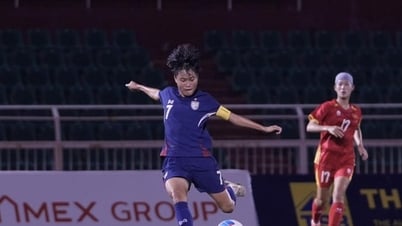

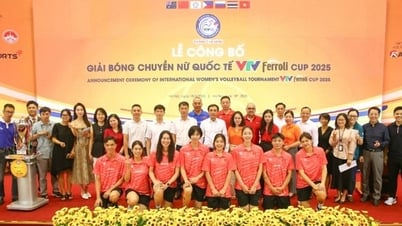
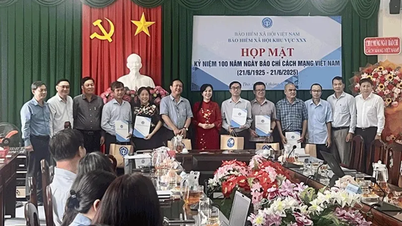

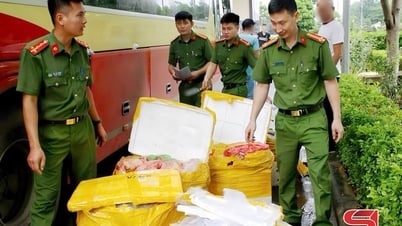

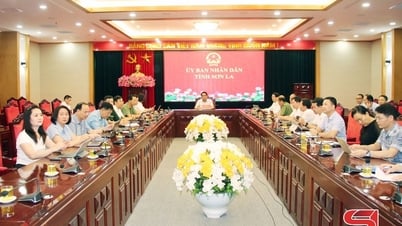




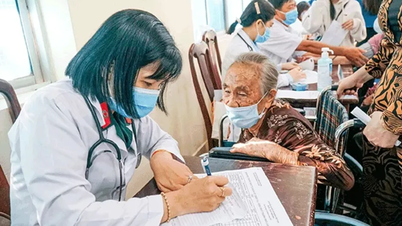
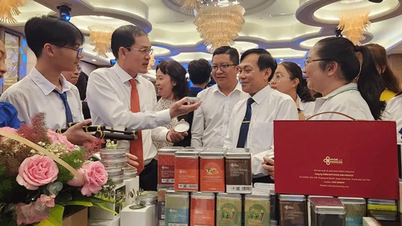
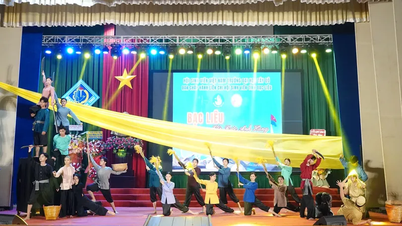
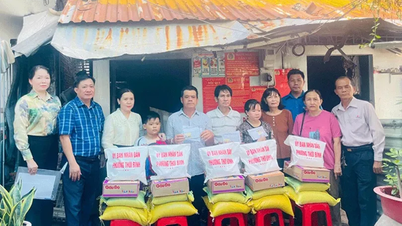
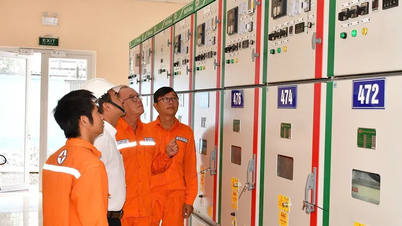
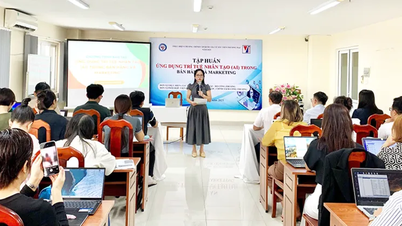
















































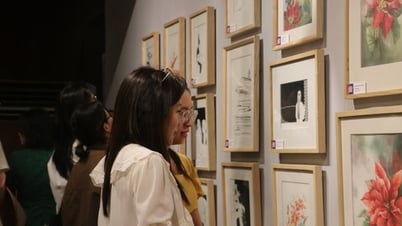
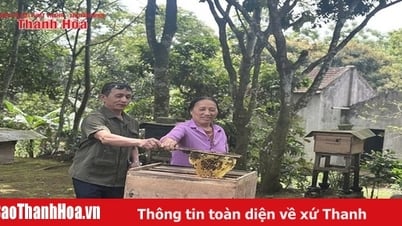

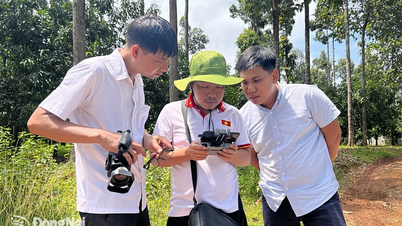


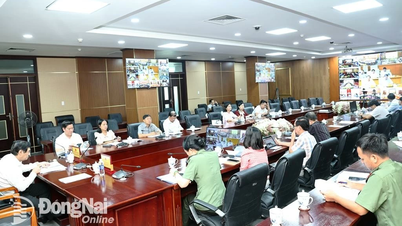
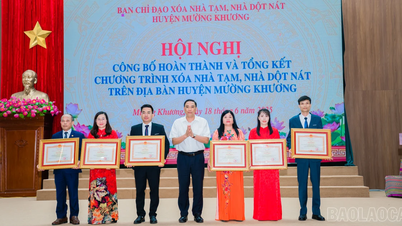














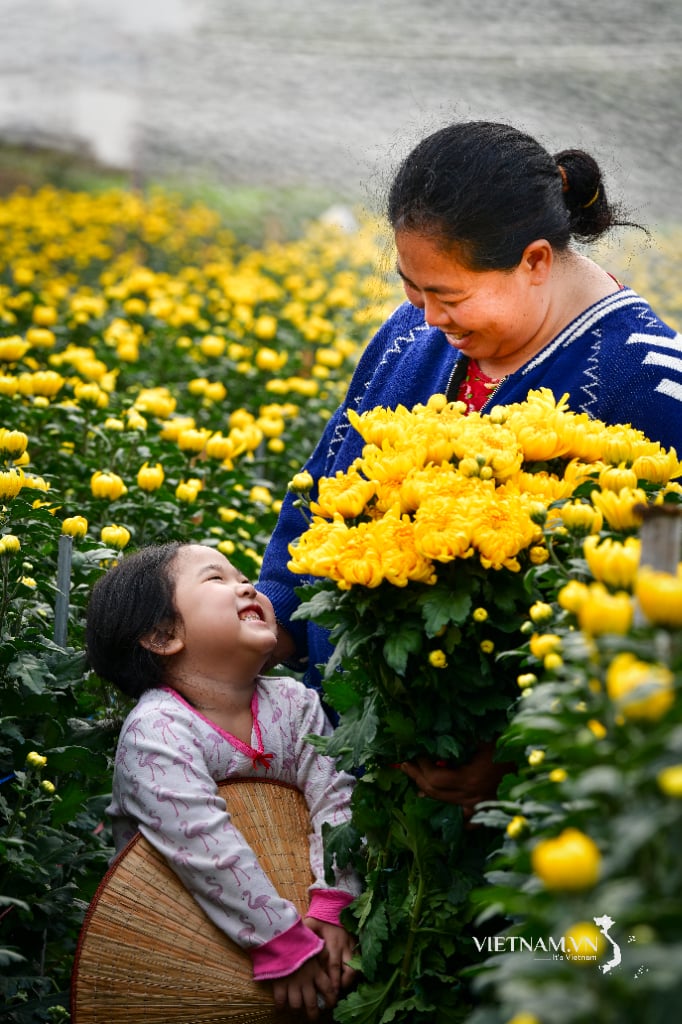
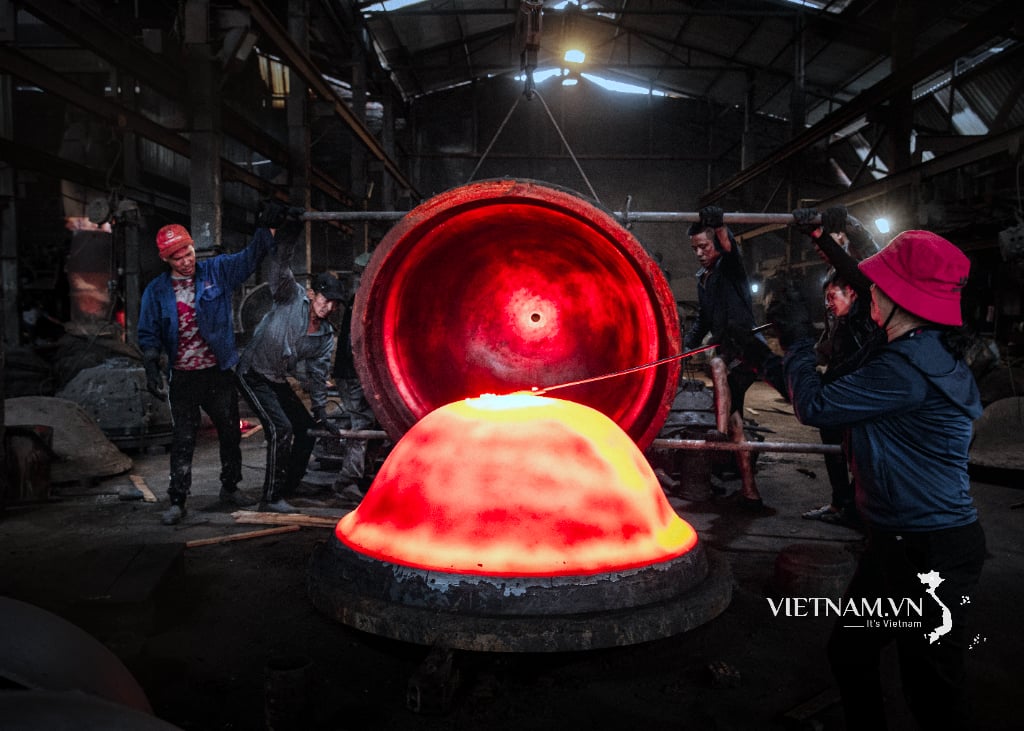
Comment (0)